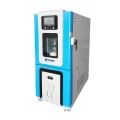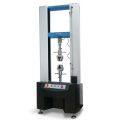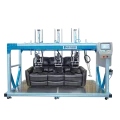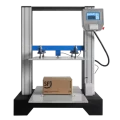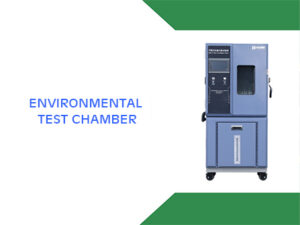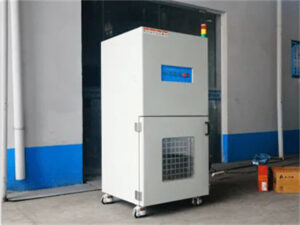The Battery Explosion-proof Test Chamber is the necessary equipment to ensure the safety of batteries in various industries. These laboratories are mainly used for over-charging and over-discharging tests on batteries. In these tests, the battery is placed in an explosion-proof chamber and connected to an external charge-discharge tester to protect the operator and the instrument.
Despite their importance, battery test chambers can suffer from some issues that can hinder their effectiveness. In this blog post, we’ll take a look at some common problems encountered with battery test chambers and possible solutions.
HD-H203 Battery Explosion-proof Test Chamber
Problem #1: Inaccurate temperature regulation
One of the most common problems with battery explosion-proof test chambers is inaccurate temperature regulation. This problem occurs when the temperature control inside the test chamber is inaccurate, resulting in inaccurate test results.
Solution: To resolve this issue, always ensure that the temperature sensor is properly located within the test chamber. Temperature sensors should be accurately calibrated and checked regularly to ensure they provide accurate readings. Additionally, it is imperative to ensure that the chamber’s heating, cooling and ventilation systems are functioning properly to maintain accurate temperature regulation.
Problem #2: Air Leaks
Another common problem encountered in battery explosion-proof test chambers is air leakage. This problem occurs when the chamber’s seal is worn or damaged, causing air to leak into the chamber.
Solution: To solve this problem, the seals should be checked frequently and regularly. Replace any worn or damaged seals as soon as possible. Also, consider investing in a quality explosion proof chamber with high sealing specifications to reduce the risk of air leaks.
Problem #3: Inefficient Airflow
Inefficient airflow occurs when there is not enough air circulating within the test chamber. This problem can cause hot spots in the chamber, leading to inaccurate test results.
Solution: To resolve this issue, make sure the chamber’s ventilation system is working properly. Consider investing in a high-quality testing chamber with efficient air circulation to ensure accurate test results.
Problem #4: Poor Calibration
Improperly calibrated test chambers can lead to inaccurate test results. This problem occurs when the sensors in the chamber are not accurately calibrated, resulting in inaccurate readings.
Solution: Always ensure that the sensors in the chamber are accurately calibrated and checked regularly. Calibrate the sensors as needed and ensure they provide accurate readings.
Problem #5: Power failure
Power failure is another common problem that battery testers can encounter. Power failure may result in loss of data or damage to equipment.
Solution: To avoid losing data or damaging equipment, invest in an uninterruptible power supply (UPS) system. The system will provide backup power in the event of a power outage, ensuring test results are not affected.
The Battery Explosion-proof Test Chamber is the necessary equipment to ensure the safety of the battery, but it is not without problems. Inaccurate temperature regulation, air leaks, inefficient airflow, poor calibration, and power failures are some of the common problems you may encounter with a battery test chamber. To solve these problems, make sure the sensors in the test chamber are accurately calibrated and checked regularly, check the leaks regularly, invest in a high quality test chamber with high sealing specifications, make sure the ventilation system is working properly, invest in an uninterruptible power supply (UPS) system, and ensure that Heating, cooling and ventilation systems are working properly to maintain precise temperature regulation. By addressing these issues, you can be confident that your battery test chamber will provide accurate and reliable test results.


